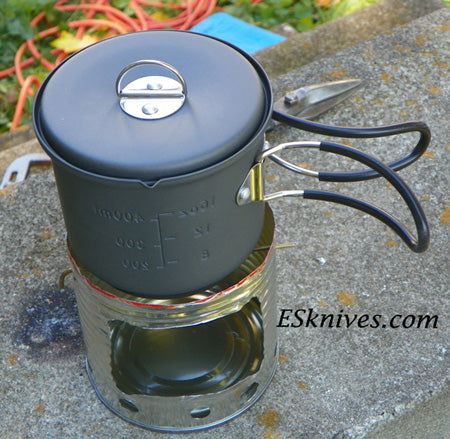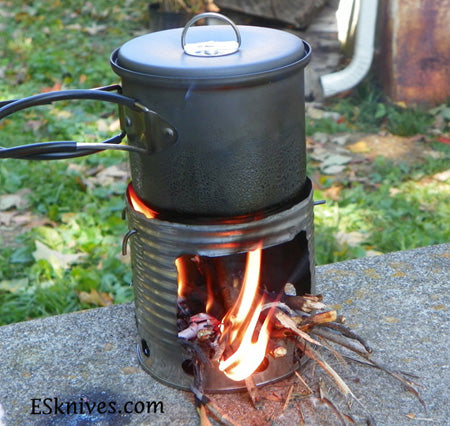How to Use The Backpacking Hobo Stove Great Survival Tool

In the last article I explained how to make a hobo backpacking stove and now in this posting it seems appropriate to explain the why.
There are many different types of stoves to take with you to the back country. There are some very expensive and fancy stoves out there. If money is an issue, there are some inexpensive stoves. There are many different types of fuels that can be chosen. White gas, butane, esbit, and wood are just a few. The problem with many of your stoves is the weight. Most weigh over a pound and then you have your fuel. The more days you are out the more fuel you have to carry.
The wood stoves on the market are rather heavy but there is no fuel to carry. Esbit stoves are light weight but there is fuel that has to be carried. Esbit tablets don't weigh much but when you are trying to shave off pounds from your pack ounces count. For every 16 ounces you can shave off you have dropped the weight of your pack by a pound. In your living room a pound does not seem like much. After several days and 15 miles a day on the trail, each added pound becomes a burden.
Being an ultra lite backpacker, I am always trying to find ways to shave off ounces. The backpackers kitchen is a great place to focus on unneeded weight. I wanted to be able to get my whole kitchen, which means, stove, pot, tinder, fire starter and other cooking supplies, down to 16 ounces. To do that I would have to give up carrying fuel.
I have always been intrigued by hobo stoves. They are usually made with coffee cans and coffee cans are to large and to heavy to carry in the woods. Besides metal coffee cans are hard to find now a days. What I needed was a hobo design but smaller.

My son and I began to measure cans. I am sure we looked a little funny at the local grocery store measuring cans. We first measured soup cans. We could of made a soup can work but it was smaller than we wanted and our pots would not fit inside a soup can. After looking at many cans we decided on the classic V-8 can. The V-8 can was workable, had a good weight and our pots would fit in the can, taking little space in the pack.
After we built the stove we had to try it out. First we put our kitchen together and it fit in the pot tight. The stove and kitchen weighed in at 14 ounces. We beat our goal by 2 ounces. The only thing left was to try it out.
We got some simple tinder, cotton balls, and some small sticks. We started the cotton balls with our fire starter and started feeding sticks into the flames. It was a great success, better than I imagined. We had three cups of water boiling in 7 minutes. That is a lot of water to boil in a small amount of time.
We have now taken our stove out several times to the woods. Our stove has served us well, made some fantastic meals and hot beverages. The great thing about this stove is that you can find fuel that burns almost every where. You can take this stove on the mountain, on the plains, in the desert or even on the beach. I have been on the tundra and on the tundra burning materials can be harder to find. Materials can be found but you may want to carry fuel when backpacking on the tundra.
Here is our video showing the hobo stove at work.
Related Posts
-
Weekly Knife Giveaway - Claim your Entry
We're giving away a knife every week through the end of A...
-
Survival with Bandanas
When I am out in the wild for more than a day I always th...








Comments